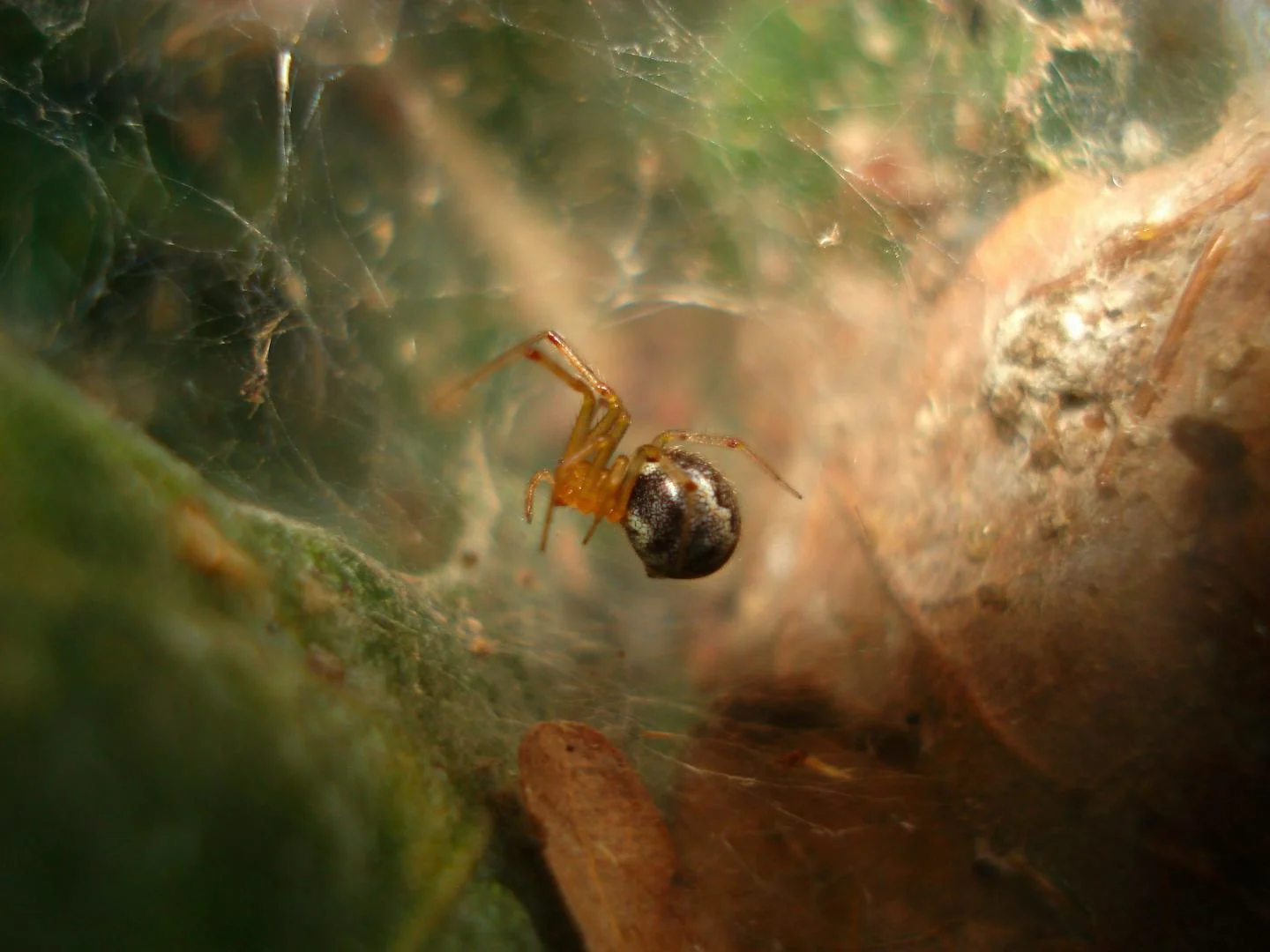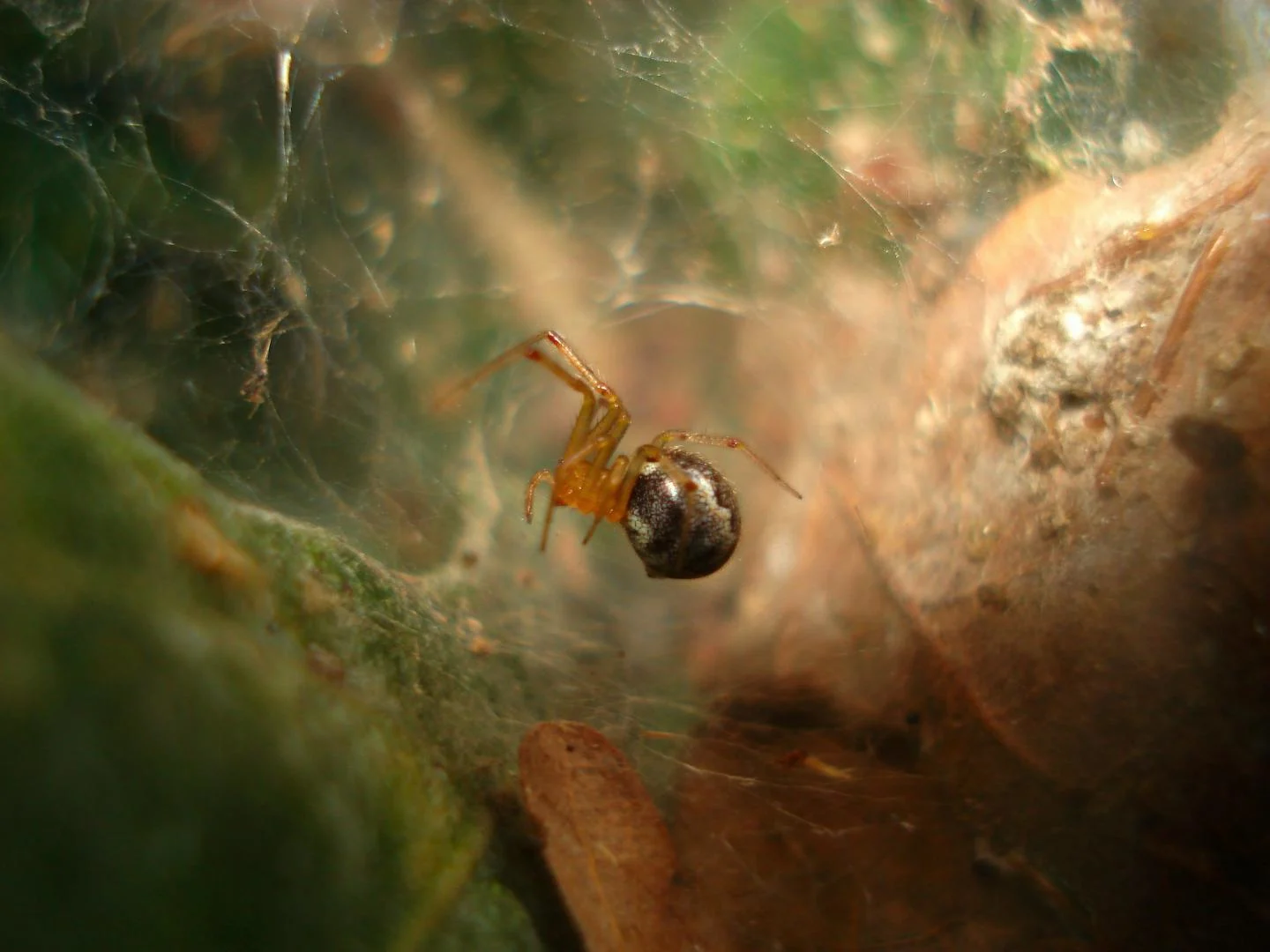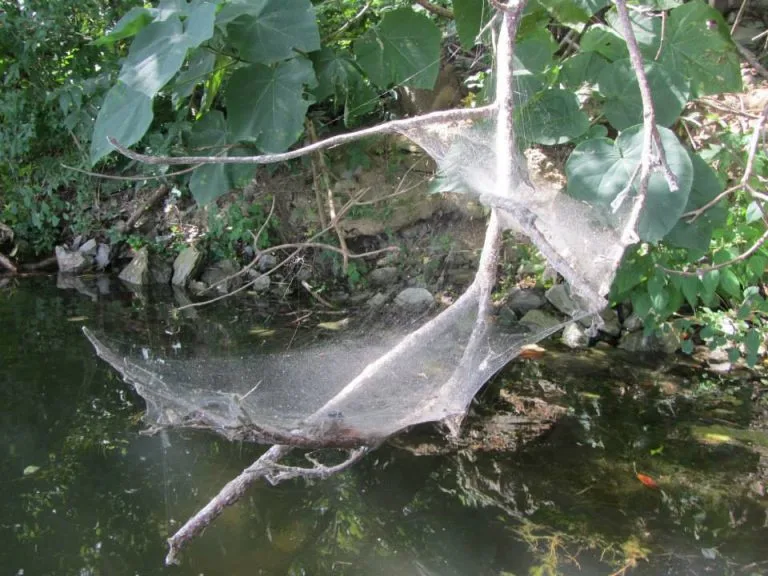
Here's what happens to the spiders when a hurricane hits
'Aggressive' strains of spiders are more likely to survive the hit, new research says.
Hurricane hits can be devastating, wrecking infrastructure and homes, threatening lives, and damaging the landscape. And on top of everything else, new research suggests such catastrophes have another effect: Jump-starting local spider evolution, such that the most aggressive spiders have the best chance of survival.
A team of researchers at McMaster University studied around 240 female colonies of Anelosimus studiosus, native to the Mexican and U.S. Gulf coasts. They painstakingly took samples before, and after, impacts by tropical cyclones in 2018, including subtropical storm Alberto, Hurricane Florence and Hurricane Michael.

Image: Thomas Jones/McMaster University.
READ MORE: It's not your imagination, spiders are getting bigger
What the researchers found won't give much comfort to arachnophobes. That particular species is divided into distinct "docile" and "aggressive" offshoots, based on a number of characteristics. Far from the tropical cyclones wiping out all the spiders, the ones that survived tended to be the more aggressive variety, whose traits -- including being better able to manage resources and forage for more in harder times, at least for a while -- made them better equipped to bounce back after a major weather disaster.
"Aggressiveness is passed down through generations in these colonies, from parent to daughter, and is a major factor in their survival and ability to reproduce," lead author and McMaster evolutionary biologist Jonathan Pruitt said in a release from the university.
That aggressiveness would definitely come in handy, given how flattened the landscape would have been in the wake of a hurricane hit. Specifically, the researchers found the more "aggressive" strain laid more egg cases and more of their hatchlings made it through the following winter, something they saw over multiple storms with different intensity levels.

Image: Jonathan Pruitt/McMaster University.
Pruit says it's "tremendously important" to understand the effects of these kinds of difficult-to-predict "black swan" events.
READ MORE: Black widow spiders continue to creep northward
“As sea levels rise, the incidence of tropical storms will only increase. Now more than ever we need to contend with what the ecological and evolutionary impacts of these storms will be for non-human animals,” he said.
The group's research was published in the journal Nature Ecology and Evolution in August this year.
It's certainly good insight into how we can expect spiders to behave when faced with extreme events, and there've been other instances where we can observe the arachnids reacting to that kind of weather -- for example, when millions of them took over trees in Pakistan after a 2010 flood.
The spiders were fleeing massive floods that disrupted the lives of 20 million people, completely cocooning the trees they took refuge in.
People who aren't fond of spiders may squirm at the sight, but it had a beneficial side effect: Large stretches of stagnant water are a haven for mosquitos, but aid workers in the region noticed much lower numbers of the malaria-bearing insects -- likely the work of the apparently ravenous misplaced spiders, according to Wired.











